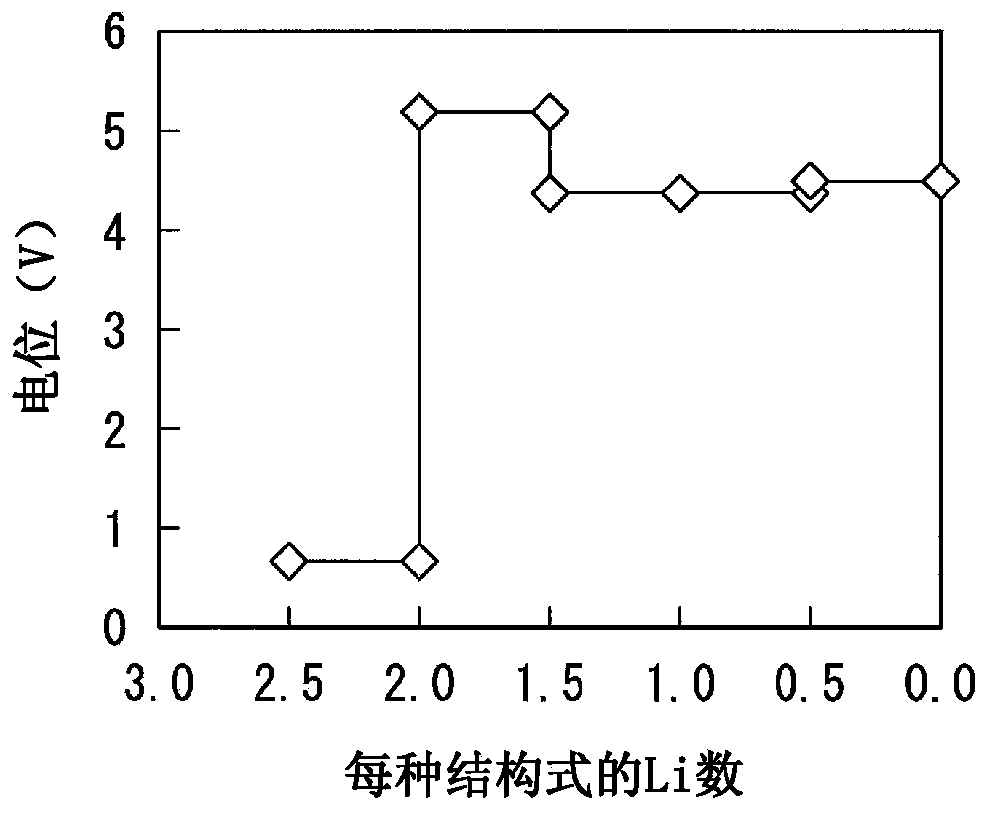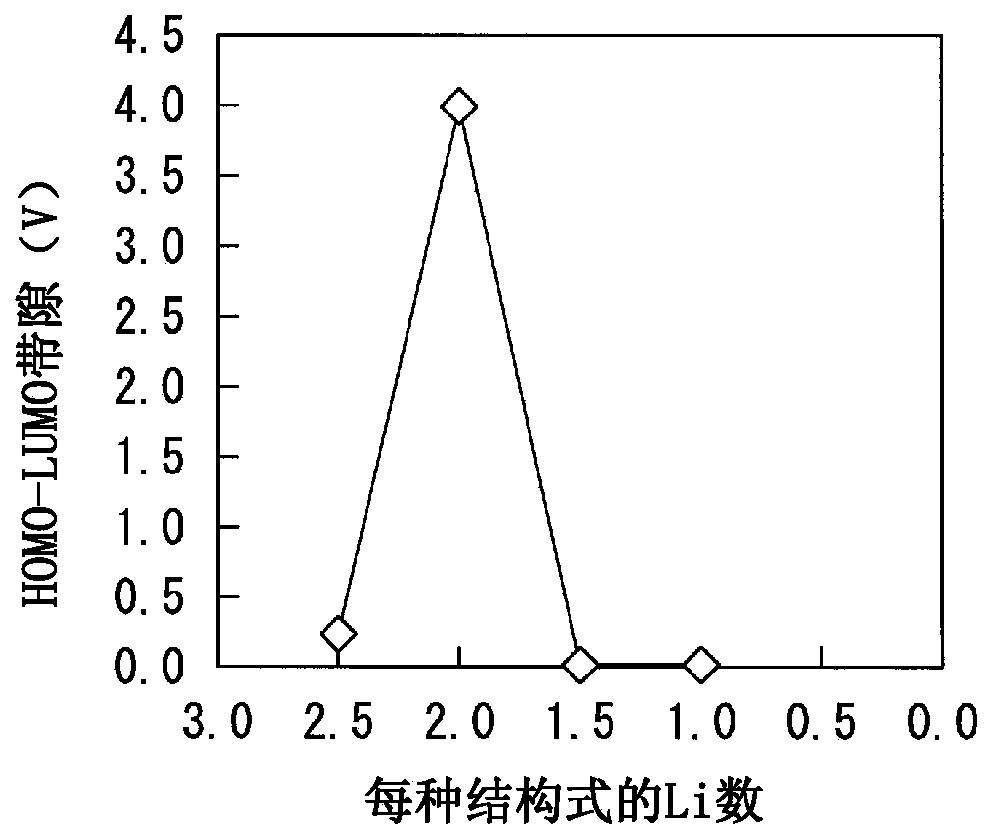Solid electrolyte and all-solid lithium-ion secondary battery
A solid electrolyte and secondary battery technology, applied in non-aqueous electrolyte batteries, secondary batteries, electrolytes, etc., can solve the problems of decreased ion conductivity and low ion conductivity
- Summary
- Abstract
- Description
- Claims
- Application Information
AI Technical Summary
Problems solved by technology
Method used
Image
Examples
Embodiment 1-1
[0142] In Example 1-1, measure LiZr with nickel 2 (PO 4 ) 3 Part of the zirconium is substituted by Li 1+0.5x Ni 0.5 Zr 1.5 (PO 4 ) 3 characteristic changes. The result is Figure 6A ~ Figure 6D . exist Figures 6A-6D middle, Figure 6A It is a figure which shows the change of the potential when the Li number of each structural formula changes. Figure 6B It is a graph showing the size of the HOMO-LUMO band gap of the solid electrolyte with respect to the Li number of each structural formula. Figure 6C It is a graph showing the change in the valence state of zirconium and nickel constituting the solid electrolyte when the Li number of each structural formula changes. Figure 6D It is a graph showing the change in the valence state of oxygen constituting the solid electrolyte when the Li number of each structural formula changes.
[0143] Such as Figure 6B As shown, even when a part of zirconium is replaced by nickel, the solid electrolyte maintains electronic i...
Embodiment 1-2
[0145] In Example 1-2, measure LiZr with vanadium 2 (PO 4 ) 3 Part of the zirconium is substituted by Li 1+0.5x V 0.5 Zr 1.5 (PO 4 ) 3 characteristic changes. The result is Figure 7A ~ Figure 7D . exist Figures 7A-7D middle, Figure 7A It is a figure which shows the change of the potential when the Li number of each structural formula changes. Figure 7B It is a graph showing the size of the HOMO-LUMO band gap of the solid electrolyte with respect to the Li number of each structural formula. Figure 7C It is a graph showing changes in the valence states of zirconium and vanadium constituting the solid electrolyte when the Li number of each structural formula changes. Figure 7D It is a graph showing the change in the valence state of oxygen constituting the solid electrolyte when the Li number changes.
[0146] Such as Figure 7B As shown, even when a part of zirconium was substituted with vanadium, the solid electrolyte maintained electronic insulation in a wi...
Embodiment 1-3
[0148] In Examples 1-3, measure the LiZr 2 (PO 4 ) 3 Part of the zirconium is replaced by tantalum after the Li 1+0.5x Ta 0.5 Zr 1.5 (PO 4 ) 3 characteristic changes. The result is Figure 8A ~ Figure 8D . exist Figures 8A-8D middle, Figure 8A It is a figure which shows the change of the potential when the Li number of each structural formula changes. Figure 8B It is a graph showing the size of the HOMO-LUMO band gap of the solid electrolyte with respect to the Li number of each structural formula. Figure 8C It is a graph showing the change in the valence state of zirconium and tantalum constituting the solid electrolyte when the Li number of each structural formula changes. Figure 8D It is a graph showing the change in the valence state of oxygen constituting the solid electrolyte when the Li number of each structural formula changes.
[0149] Such as Figure 8B As shown, even when a part of zirconium is replaced with tantalum, the solid electrolyte maintai...
PUM
 Login to View More
Login to View More Abstract
Description
Claims
Application Information
 Login to View More
Login to View More - R&D Engineer
- R&D Manager
- IP Professional
- Industry Leading Data Capabilities
- Powerful AI technology
- Patent DNA Extraction
Browse by: Latest US Patents, China's latest patents, Technical Efficacy Thesaurus, Application Domain, Technology Topic, Popular Technical Reports.
© 2024 PatSnap. All rights reserved.Legal|Privacy policy|Modern Slavery Act Transparency Statement|Sitemap|About US| Contact US: help@patsnap.com










